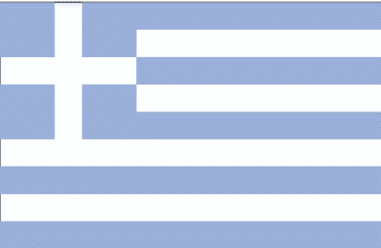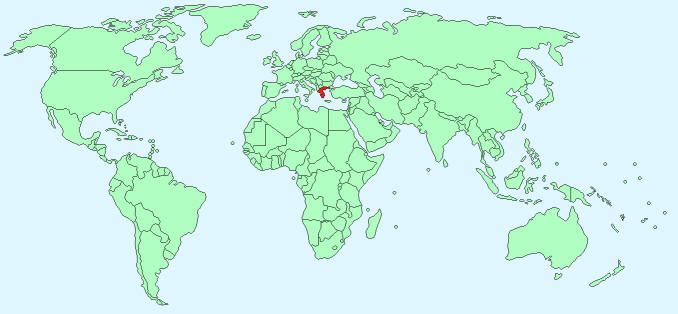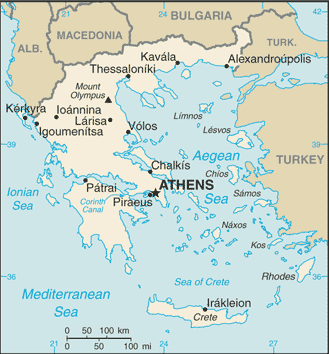Greece


Continent – Europe
Region – Central Europe (member of the EU)
Size – 131,957 km²
Geography – mostly mountains with ranges extending into the sea as peninsulas or chains of islands
Language – Greek
Religion – 98% Greek Orthodox, 1.3% Muslim, 0.7% other
Monetary Unit – Euro
Natural Resources – lignite, petroleum, iron ore, bauxite, lead, zinc, nickel, magnesite, marble, salt
Agriculture – wheat, corn, barley, sugar beets, olives, tomatoes, wine, tobacco, potatoes; beef, dairy products
Industry – tourism, food and tobacco processing, textiles, chemicals, metal products; mining, petroleum
Neighbouring Countries – Albania, Macedonia, Bulgaria, Turkey
Population – 10,775,557 (2014 estimate)
Population Growth Rate – 0.01%
Average Life Expectancy – 80.3
Capital City – Athens (3,090,508)
Highest Mountain – Mount Olympus (2917 m)
Longest River – Aliakmon (297 km)
Climate – Temperate, Mediterranean – mild winters 6°C to 19°C, hot summers 19°C to 33°C
Yearly Rainfall – 40 cm (approx)
Plant Life – oak, chestnut, pine, beech, fir, oranges, olives, dates, almonds, pomegranates, figs, grapes, tobacco, cotton
Animal Life – bear, wildcat, jackal, fox, chamois, wild goat
Bird Life – many migratory and native birds
Harvard Reference for this page:
Heather Y Wheeler. (2015). Greece. Available: https://www.naturalhistoryonthenet.com/Facts_Figures/Country_Facts/greece.htm. Last accessed Monday, July 18, 2016
Facts and Figures Pages
